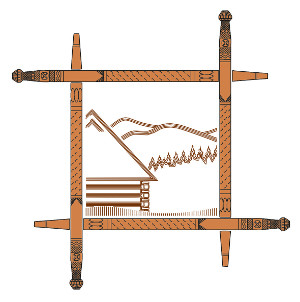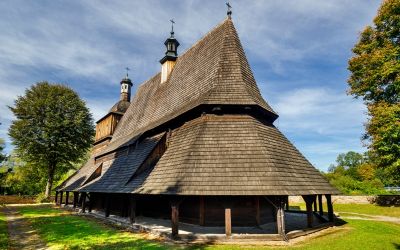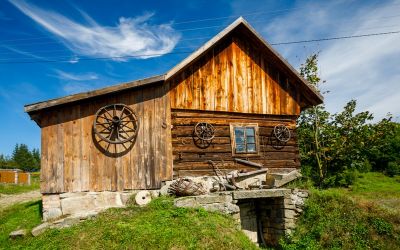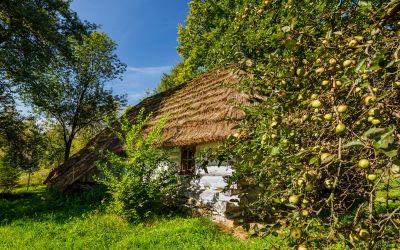In the footsteps of Wołochów around Lesser Poland
We invite you to wander in the footsteps of Wołochów ... 15 thematic routes leading through Lesser Poland, which together form a holistic, cross-sectional image of the shepherd's legacy, for which mountain areas are the background - a context that thanks to the trails gains additional, non-material value.
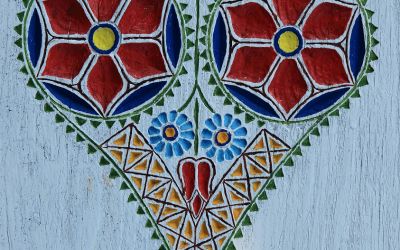
Czas przejścia:
3:30
Odległość:
53,9
Poziom trudności:
3
Tematyka:
architektura
Opis produktu
Gorlice - Sękowa 3.8 km (0:15 h) - Ropica Górna 5 km (0:20 h) - Bodaki 6.2 km (0:25 h) - Małastów 6.6 km (0:25 h) - Nowica 8.8 km (0:45 h) - Bielanka 8.5 km (0:35 h) - Szymbark 6.8 km (0:25 h) - Gorlice 8.2 km (0:25 h)
The route is recommended for: individual tourists.
Water is life - no wonder that the hearts of the village began to beat over the springs and streams. Watercourses had the greatest impact on the shaping of the spatial arrangement of settlements. In the forested mountain areas, so-called "Chains", a great example of which is Zawoja and Ochotnica - the two longest villages in Poland.
The basic element of the rural layout is the farm - a complex of farm and residential buildings, the center of life and work of rural families. Each farm was built on its own field of a grubbed field, which departed from the main road and ran through the forest to the waters department which is the border of the village. Long strips of land, located closely next to each other, formed a characteristic, repetitive rhythm, perfectly visible from today from a bird's eye view.
Villages have evolved over time and along with the changing conditions of the natural environment and socio-economic conditions. Their original shape was gradually expanded and blurred. In many of them, however, you can still read their original assumptions. One of the most valuable village complexes with Wallachian roots is the inconspicuous village in the Low Beskids - Bodaki - in which traditional folk architecture has been preserved. The layout of plots is also clear, the structure of the land and agri-forest borders is visible, and cattle and sheep grazing are still going on. You can meet here, among others wooden cottages. Their uniqueness lies in the simplicity that resisted accretions and fashions penetrating from other regions of Poland and abroad.
Going through the wooden, creaking door of an old cottage is like entering an old world that is gradually disappearing before our eyes. It is worth visiting it before it remains only on yellowing photographs.
Route:
The western part of the Low Beskids, as well as the entire Lemko region, is rich in ethnographic attractions, grown on the basis of the assimilation of two ethnic elements - Wallachian and Ruthenian. The cycle route leads through an easily accessible area where you can find the remains of the old world.
We start the journey in Gorlice. At the fair taking place here, the surrounding population, engaged in sheep and cattle breeding, sold their animals. We head south along provincial road No. 977, after about 0:15 hours we reach Sękowa. A historic wooden church in the village, inscribed on the UNESCO list.
We continue along the main road, after about 0:20 h passing the town of Ropica Górna, one of the oldest villages in the area, which in the 16th century adopted Wallachian law. Until 1949, the village was called Ropica Ruska. After approx. 2 km, turn left to Bartne. It is worth going to the town of Bodaki, where traditional folk architecture has survived to this day quite well.
From Bodaków we return to road No. 977, after about 0:25 h we reach Małastów, one of the older villages of the Low Beskids, historically associated with the influx of Wallachian people. Sharp driveway to the pass, near the ski station, turn left to the town of Nowica, which we reach after about 0:45 hours drive. In the village there are many Lemkos, picturesque peasants.
We head west along the Przysłupianka valley. After approx. 0:35 h, the town of Bielanka, one of the largest Lemkos in the Low Beskids. Here the road turns north to after about 4 km join the national road No. 28, called the "Carpathian route". Near the town of Szymbark, and in it incl. Renaissance defensive manor and Skansen Village of Pogórze prof. Roman Reinfuss, an outstanding ethnographer, expert on Polish folk art and ethnography of the Carpathians.
From Szymbark, take route 28 heading east to reach Gorlice after about 0:25 hours.
Dodatkowe informacje
Tourist and cultural events in the area:
- Lemkowski Kermesz in Olchowiec, May, Union of Lemkos.
- Lemko Watra, July, Union of Lemkos.
- Mountain Children Day, July, SOKÓŁ Lesser Poland Culture Center.




